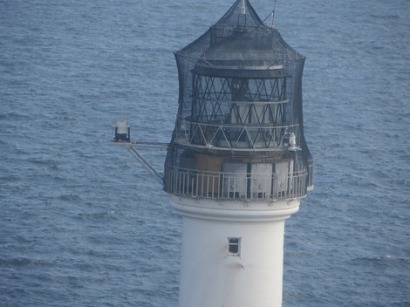
The lidar has been mounted on a platform on the north east of the lighthouse using a specially designed support frame. It will measure wind direction and wind velocity thereby augmenting wind measurements from onshore sources and from a dedicated offshore met mast that is expected to be installed in October 2014.
The ZephIR wind data will provide a real opportunity to enhance the energy assessment and revenue forecasting, which is an essential part of design refinement for offshore wind and the overall business case for the project.
“We are delighted that the ZephIR 300 lidar has been installed safely, on time, and is performing well” said Stephen Kerr, Inch Cape Project Director. “Wind data collected from this location will greatly enhance our understanding of the conditions offshore. We have worked closely with the ZephIR team and the Northern Lighthouse Board throughout the design and deployment on this iconic lighthouse and thank all parties for their ongoing support.”
Robbie Gibson, Director of Measurement at SgurrEnergy, added that the company’s offshore engineers and technicians worked together with parent company Wood Group to create a bespoke design and installation for a successful lighthouse deployment of ZephIR on behalf of Inch Cape Offshore.
The installation of the unit was carried out by SgurrEnergy who designed and fabricated a support structure which secures the ZephIR device near the top of the lighthouse. The design and installation of the unit have been optimised to reduce time spent offshore and minimise impacts on the lighthouse operation and the structure itself. The installation itself was completed safely by specialists under the supervision of SgurrEnergy and the Northern Lighthouse Board.
The Zephir 300 lidar incorporates unique low 10 metre measurements which are essential when deployed on taller structures such as lighthouses. It also eliminates the need for annual calibration and extensive service period and therefore is suitable for situations in which lidar needs to be left installed for long periods of time in applications such as offshore, mounted on turbines and for long-term Energy Assessment campaigns onshore.
ZephIR Ltd released its first commercial wind lidar (ZephIR) in 2003 following decades of research at UK government Research & Development establishment QinetiQ. This in turn paved the way for many remote sensing devices seen today. ZephIR has now amassed more than 7 million hours of operation across more than 750 deployments worldwide. ZephIR Ltd is a wholly owned subsidiary of Fred Olsen Ltd.
For additional information:

